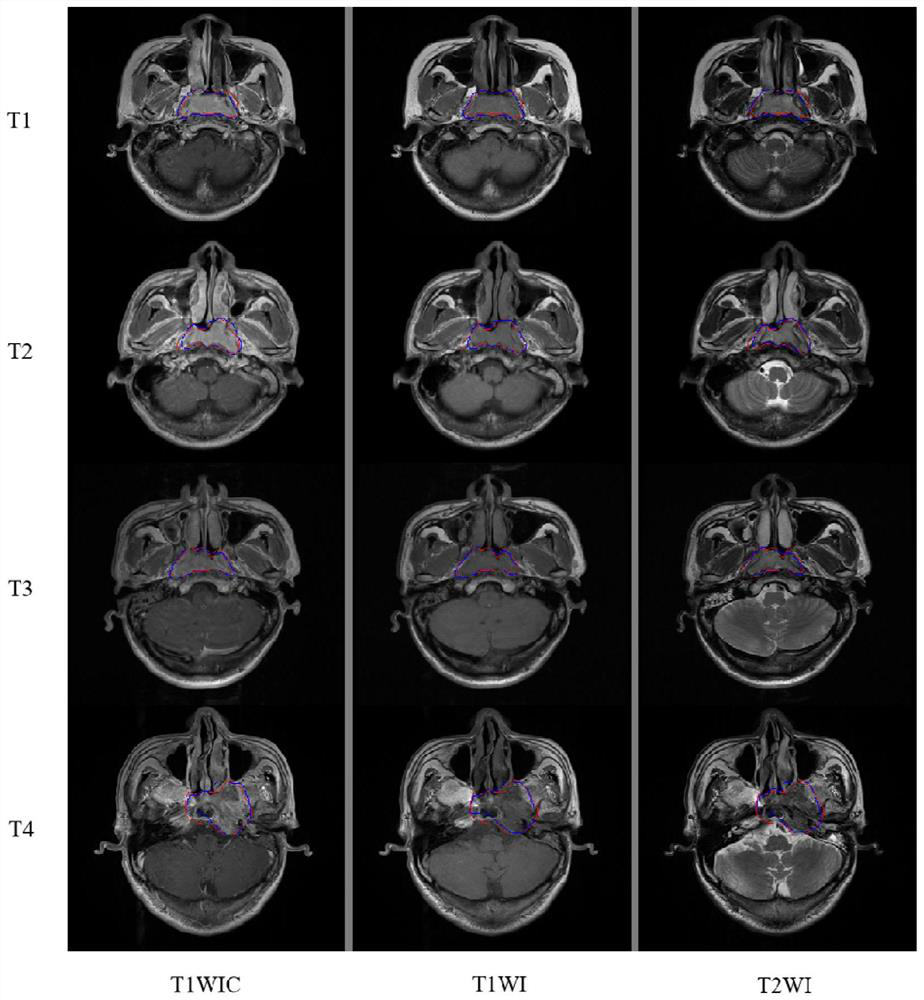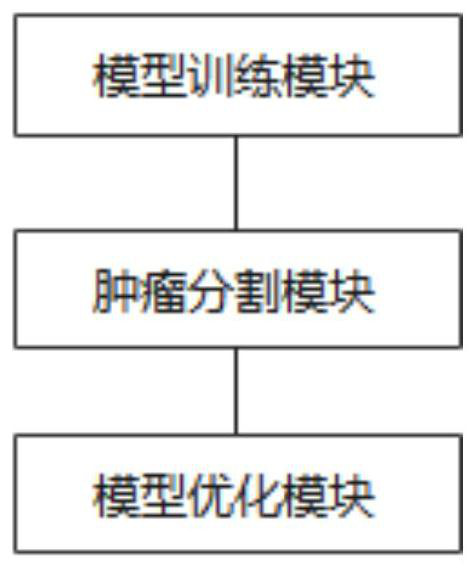Nasopharyngeal carcinoma identification and tumor segmentation method and system based on MR image
A nasopharyngeal carcinoma and image technology, applied in the field of nasopharyngeal carcinoma identification and tumor segmentation method and system, can solve the problems of optimization, single function, and inability to apply at the same time, so as to consolidate robustness, enhance generalization ability, and improve segmentation effect of effect
- Summary
- Abstract
- Description
- Claims
- Application Information
AI Technical Summary
Problems solved by technology
Method used
Image
Examples
Embodiment 1
[0055] Please refer to figure 1 , an MR image-based nasopharyngeal carcinoma identification and tumor segmentation method provided in an embodiment of the present invention, comprising:
[0056] S101: Receive a first image uploaded by a first user; wherein, the first image includes an MR unenhanced sequence image or an MR enhanced sequence image, and the first user may be a clinician or a patient.
[0057] S102: Perform preprocessing on the first image to obtain a second image corresponding to the first image.
[0058] In this embodiment, further, the preprocessing of the first image to obtain the second image of the first image is specifically:
[0059] The first image is preprocessed by image data cleaning, data normalization, plain scan and enhanced image registration, to obtain a second image corresponding to the first image.
[0060] It should be noted that, by performing preprocessing on the first image, the first image is converted into a second image corresponding to...
PUM
 Login to View More
Login to View More Abstract
Description
Claims
Application Information
 Login to View More
Login to View More - R&D
- Intellectual Property
- Life Sciences
- Materials
- Tech Scout
- Unparalleled Data Quality
- Higher Quality Content
- 60% Fewer Hallucinations
Browse by: Latest US Patents, China's latest patents, Technical Efficacy Thesaurus, Application Domain, Technology Topic, Popular Technical Reports.
© 2025 PatSnap. All rights reserved.Legal|Privacy policy|Modern Slavery Act Transparency Statement|Sitemap|About US| Contact US: help@patsnap.com



